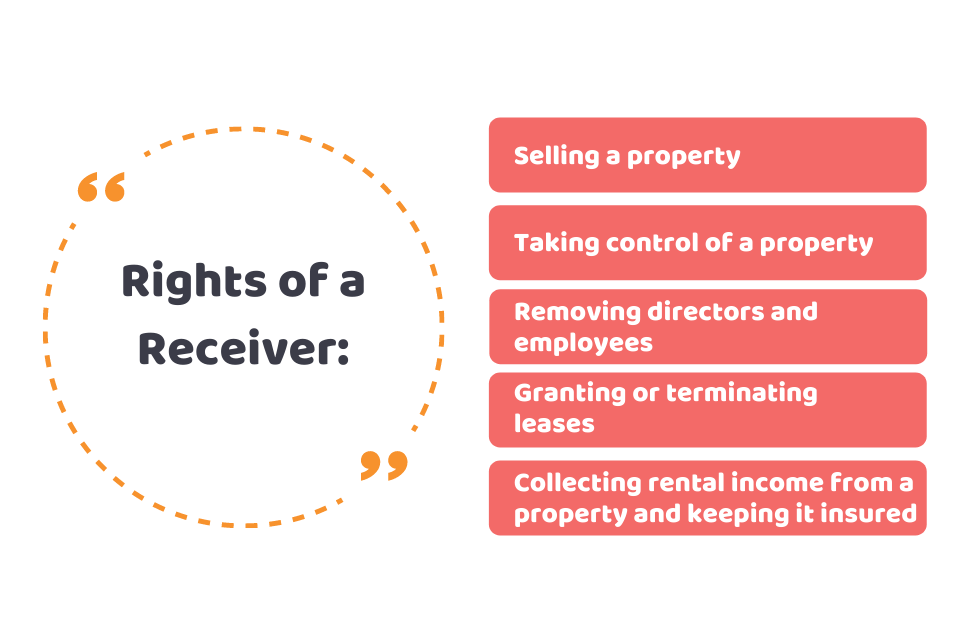Things are always uncertain about a business. Pandemic, investment failure, fraudulence, change in consumer preferences and other things can lead your company towards insolvency. For this reason, you need to have a contingency plan to deal with the unfavourable circumstances of the future. So receivership is here to protect you (creditors) against bankruptcy and to regain funds in default. Let’s explore: what is receivership, what are the reasons for going into receivership, and how it will impact your business.
Hiring an accountant will save you and your business from insolvency. Feel free to contact us to get inclusive accounting services at a reasonable rate. Get an instant quote right now!
What is Receivership?
The term Receivership, is also called administrative receivership, is a legal process in which a receiver is selected by a creditor (usually a bank or other lender) to control the entire business. The receiver (a licensed insolvency practitioner) has the responsibility to receive assets to liquidate, to pay back the creditors.
To appoint a receiver, the creditors must have secured debt of £750 or more or hold a qualifying floating charge created before 15th September 2003. The businesses that get loans by using their current or long-term asset as security, like equipment property, inventory, or accounts receivable, may face receivership. The lender can take hold of those assets to recover the loan granted. There are two types of receivership in the UK:
- LPA / Fixed Charge Receivership: Here, the receiver generally controls a single property.
- Administrative Receivership: Here receiver administer and manage all the company’s asset.
Reasons That Cause a Receivership
Here are some of the reasons that may lead a company to receivership:
- A business acquires money from a bank or other lenders as a loan
- To get the loan, the business needs to provide security and sign debenture with fixed and floating charges offering security to the bank over the company’s assets.
- In case there is a breach or a business doesn’t comply with the lender’s wishes: the lender can appoint an accountant to investigate the debt and to find the best route to proceed; ask for the formal loan repayment without prior notice; appoint a receiver to receive and administer the assets of the business.
- Generally, the receiver has the responsibility to collect the bank debts.
Responsibilities of the Receiver
The job of the receiver is to work in the best interest of the creditors to regain the debts the debtors need to pay. The receiver will evaluate the business and its prospects to work out whether to:
- Sell the business as a whole
- Sell some or all the assets of the company
- Allow it to continue trading
The receiver is solely responsible for taking the best route for achieving the best result in the interest of the company. And, he/she does not need to seek advice from the directors.
On the verge of accounting insolvency? Contact us right away for instant help!
What Rights Does the Receiver Have?
According to the Law of Property Act, the receiver’s rights include the power to:
- Sell a property
- Take possession of a property
- Remove directors and employees
- Grant or terminate leases
- Collect rental income from a property and keep it insured
Can You Stop Receivership?
In most instances, the receivership may result in the complete closure of a business. It may happen if the value of the company’s assets is sufficient enough to cover the debts, allowing the business to continue its operations after the receivership. However, it rarely happens.
Therefore, you need to beware that the receiver may sell all the assets to regain the unpaid debts. This may leave an empty shell along with the employee redundancies for the director to resolve.
To be on the safe side, you need to take immediate action if you found that you are heading towards receivership. One of the processes to get a breathing space is the administration that helps you to postpone the receivership for up to 8 weeks. This period allows the insolvency practitioner to evaluate the company’s situation to find opportunities and options available to save a business from the damaging effect of receivership.
Quick Sum Up
So, now that you know: what is receivership, why your business may face it, what does a receiver do, what are the rights of the receiver, and how you can stop receivership. We recommend you take immediate action if you find that your relationship with the banks are breaking down and you are heading towards receivership. Receivership may be avoided for some time by placing your business into administration. In this instance, you need to take professional help to negotiate a company voluntary arrangement (CVA) with your lenders that allows you to keep trading.
Accotax is here for your help. We have a team of chartered accountants in London for managing your finances perfectly to keep you safe from insolvency. Reach out to our professionals to discuss your issue and make a custom offer accordingly.
Get an instant quote now!
Disclaimer: This blog provides general information on receivership and should not be taken as expert advice.






















































